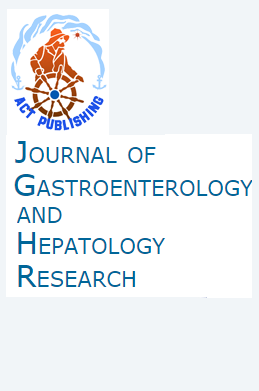
Authors: Patrícia Souza de Almeida Borges, Vívian Mota Guimarães, João Luiz Rodrigues de Farias, Lívia Zardo Trindade, Ibrahim Ahmad H. El Bacha, Roberto J. Carvalho-Filho, Edison Roberto Parise
Journal of Gastroenterology and Hepatology Research, Vol 5, No 2 (2016)
Abstract:
AIM: In patients with chronic hepatitis C virus (HCV) infection, 25-hydroxyvitamin D3 [25(OH)D] deficiency has been associated with disease progression and decreased odds of sustained virologic response (SVR) to pegylated interferon and ribavirin combination therapy (PegIFN + RBV).
METHODS: In this retrospective study, the pretreatment 25(OH)D levels of patients with genotype 1 HCV infection treated with PegIFN + RBV for 48 weeks were measured and correlated with disease stage and periportal necroinflammatory activity (PPA) on liver biopsy, as well as to virologic response at the end of the treatment period. Serum 25(OH)D levels were quantitated by chemiluminescence.
RESULTS: Of the 201 patients included, 53% were male and 70% were white, with a mean (SD) age of 46 (± 11) years. Subtype 1b was identified in 48% of cases, and 57% of patients had a viral load over 800 000 IU/mL. Overall, 29% of patients had stage 3/4 fibrosis and 40% had grade 3/4 PPA. SVR was achieved in 47% of patients. The mean 25(OH)D concentration was 26.3 (± 11.5) ng/mL. Low 25(OH)D levels (< 30 ng/dL) were detected in 69% of patients, and were not associated with staging (rS = -0.003; P = 0.895) or grading (rS = 0.045; P = 0.105). There were no significant differences in SVR rate between patients with vs those without 25(OH)D deficiency (49% vs 40%, P = 0.359). The only variables associated with 25(OH)D insufficiency or deficiency were serum albumin (rS = 0.199; P = 0.006), female sex (rS = 0.249; P = 0.002), and age (rS = -0.227; P = 0.001). ing HCV patients during bleeding episodes (OR = 7.262; 95% CI: 3.588– 14.698, p = 0.000).
CONCLUSIONS: In this sample of patients with chronic HCV infection, vitamin D deficiency was not associated with increased histologic severity, nor with increased likelihood of
SVR.
http://www.ghrnet.org/index.php/joghr/article/view/1558/1941


